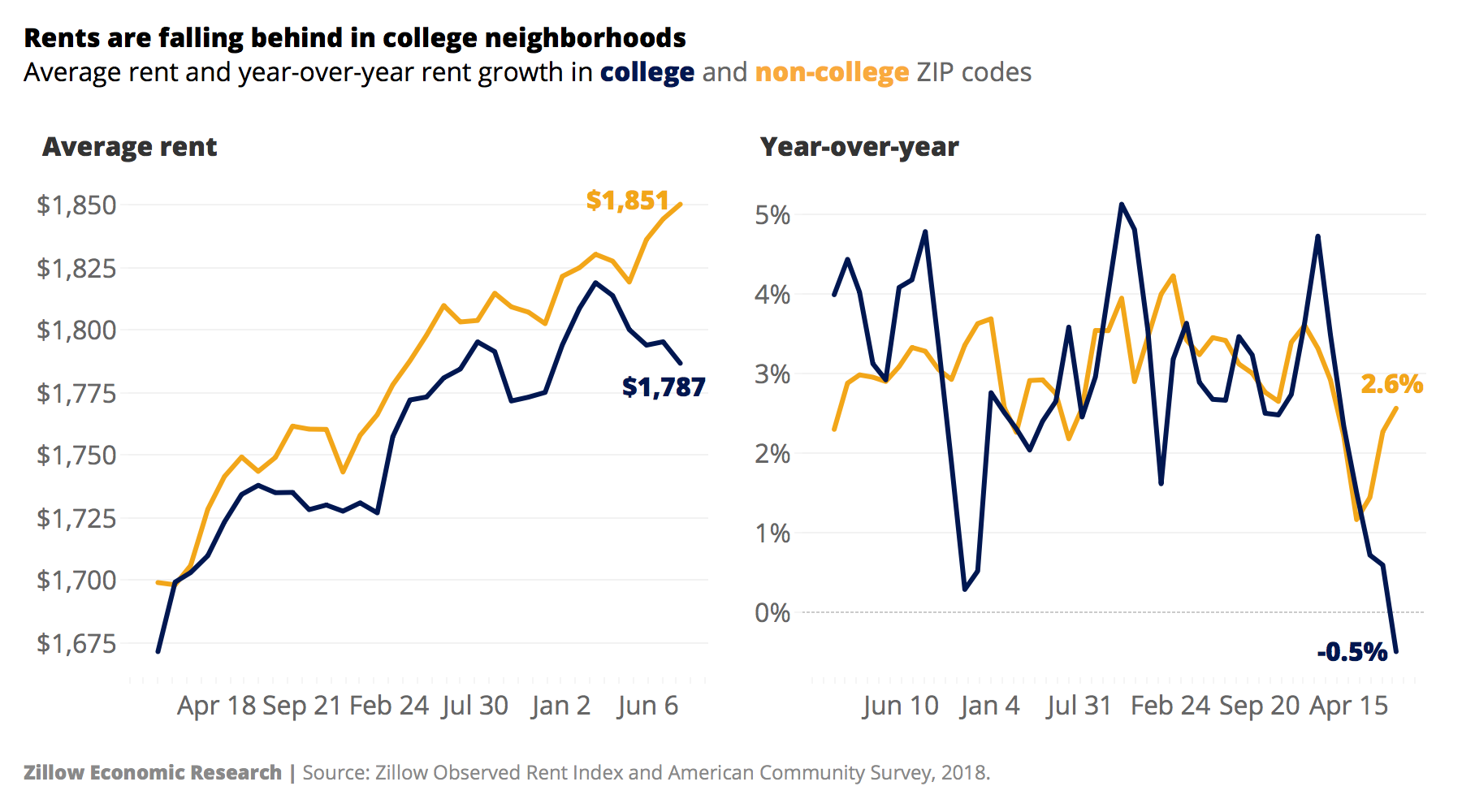- Rents in college areas (neighborhoods with 20% or more college students) were down 0.5% year-over-year in August, but were up 2.6% year-over-year in non-college areas.
- The gap between rents in college areas and non-college areas is as wide as it has been since at least 2017.
- Two million more young Americans were living with parents or grandparents in August compared to last year.
Rent prices in college neighborhoods have fallen this summer as colleges and universities across the country have opted for remote learning during the coronavirus pandemic. The drop in college areas stands out even in a rental market that has softened since February, with rent price growth slowing and landlords offering more concessions.
Average rent prices were growing 4.7% year over year in February in college areas, according to a Zillow analysis of 100 U.S. ZIP codes in which college students make up at least 20% of the population. By August, when many students would typically move back near campus, rents were down 0.5% in these areas from the year before — the first such decline in these neighborhoods since January 2017. Rents in ZIP codes with a lower share of college students were up 2.6% over the same period.
In May, the average rent was $19 per month lower in college areas than non- college areas. By August, that gap had widened to $63 as rents continued to fall in college areas but still rose elsewhere, the widest gap between college and non-college areas since at least 2017 (the earliest Zillow data is available).

Rising unemployment and campus closures, among other factors, pushed about 2.7 million American adults to move back in with parents or grandparents last spring. Those numbers dwindled during the summer months, but there were still 2 million more 18- to 25-year-olds living at home in August than there were a year earlier, an 11% increase. The jump in the share of these college-age Americans living at home was sharpest among Black and Asian and Pacific Islander young adults. Nearly two-thirds (65.7%) of Black 18- to 25-year-olds were living at home in August, up from 56.5% last year.
With demand for rentals softening, landlords are offering discounts or other incentives as they strive to attract new tenants. Rent concessions on Zillow listings across the country are nearly twice as common as they were in February. Even small discounts or short-lived vacancies can have a big impact on landlords — rental owners typically spend more than half of their rental income on fixed costs of property ownership including mortgage payments, property taxes and insurance.
Without more progress made in combating COVID-19, it's unlikely that rents in college areas will meaningfully recover. Pandemic-mandated campus closures and opportunities to complete courses online have provided motivation for young people to move back home in order to save on rent and be close to family. And because many leases in college areas begin and end in late summer/early fall, we can expect even greater impacts to rents in these neighborhoods as we move further into the first full semester overlapped by the pandemic.
Methodology
We matched 2018 1-Year American Community Survey data for ZIP codes and their share and count of college populations with ZIP codes in the largest 100 metros for which we have Zillow Observed Rent Index data. We then compared average rents between areas with at least 20% college students and areas with less than 20% college students from January 2018 to August 2020.
The post College-Area Rents Are Falling Behind as Schools Move Online appeared first on Zillow Research.
via College-Area Rents Are Falling Behind as Schools Move Online

No comments:
Post a Comment